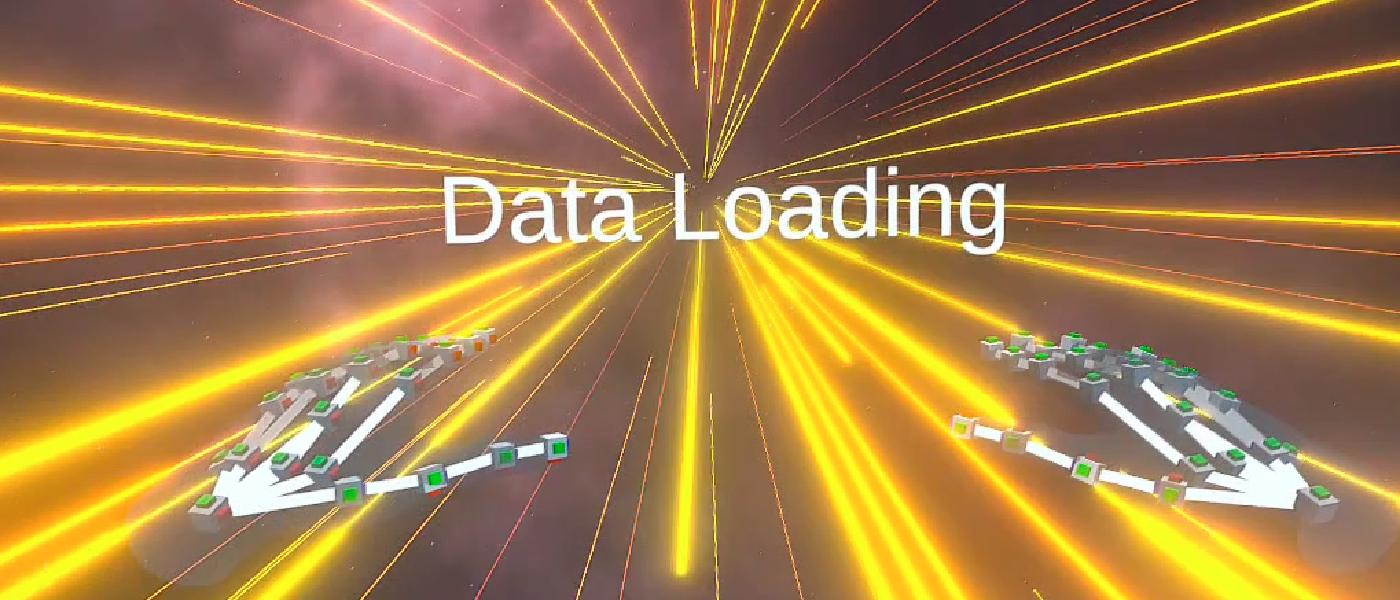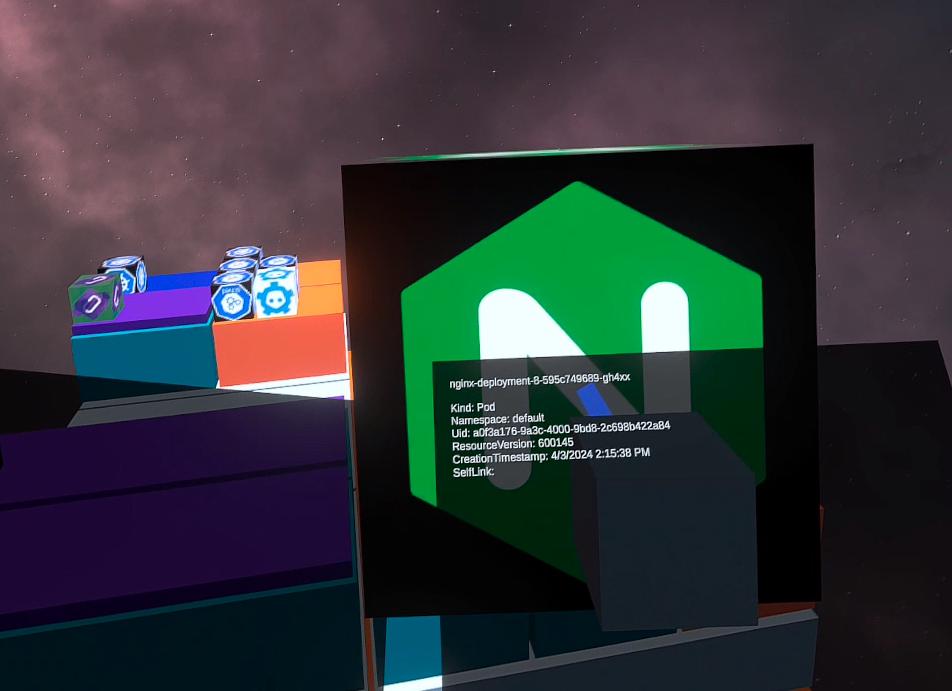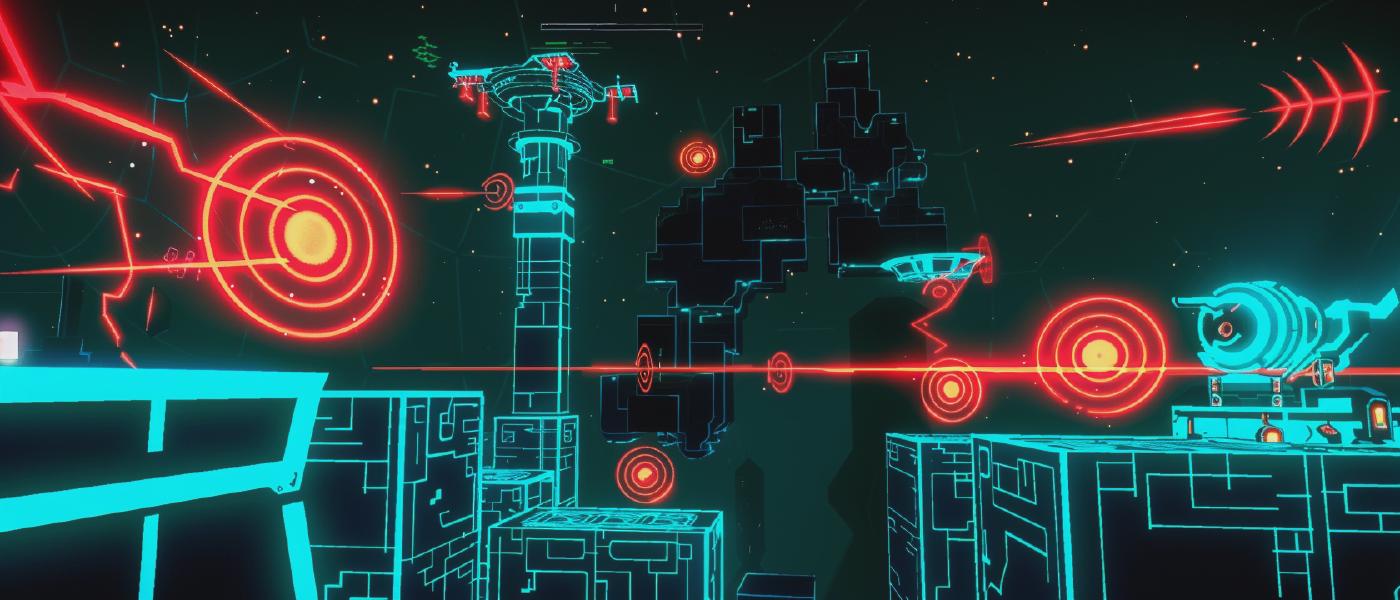Time to Jack-in and dive into your Data Fortress
Posted on April 14, 2024 • 5 min read • 1,043 wordsBigger and bigger Cloud infrastructures can be effectively represented as a 3D scene to convey more information and result in a better understanding of its organization and purpose. In addition to that, with the advent of both XR/Spatial interactions and AI agents, a lot can be done to simplify interactions between the operators and the system. I postulate that building analogies with 3 dimensional “tangible” systems is the way to increase the value of interactions with our computing infrastructures.

Takeaway
The complexity of current cloud infrastructure systems can be better understood and managed if they are represented as 3D scenes, leveraging the natural ability of humans to navigate and understand 3D environments.
I believe that this approach can simplify interactions between operators and systems, especially with the advent of XR/Spatial interactions and AI agents.
Problem: Spiraling complexity
The complexity of the systems we now manage has reached extreme levels and navigating such systems has become increasingly difficult. The current state of user interfaces leaves a lot of opportunity to improve and innovate. For ex: the operator often has to open many browser tabs of disjointed listings to make sense of things.
As humans we are wired to navigate and understand 3D environments using all of our senses to gather information (sight, touch, hearing, etc.). Going through lists and matching ids is still an unnatural and strenuous mental exercise.
Solution: Visualizing systems as 3-dimensional structures
I believe that most complex systems made of entities and relationships are good candidates for three dimensional visualization and interactions. Colors, shapes, text and position in space can convey a lot of information effectively.
I decided to start exploring this paradigm using cloud infrastructure and more specifically Kubernetes clusters because of their inherent complexity and the highly interconnected and hierarchical nature of their content.
At this time, we’ll focus on the “compute” facet of the infrastructure and leave storage and networking for later.
Hierarchy
The first valuable piece of information is the hierarchy and organization of the cluster. A simple “stack” organization can quickly give an idea of the scale and macro structure of the cluster. Some basic navigation helps with changing the point of view to better understand the structure.
A simple “tower” layout and looking around.
Focus
Being able to navigate, focus and investigate different areas of the cluster based on a spatial representation make it easier to grasp than matching id references in entity listings.
Apps and Containers
Visuals can be added to show the purpose of specific components in the system.

Problem: Low bandwidth interactions
On the input side, the intangible nature of cloud infrastructure combined with the complexity of those systems makes the tools equally complex. CLI and API calls with numerous parameters often require a re-read of the documentation. Although some complex cases can justify complex solutions, what can we do about the 80% run-of-the-mill interactions with the system? On the output side, dashboards with graphs and tables are as good as it gets and in their absence combining all information required for understanding requires a lot of screen real estate.
Solution: Natural, multimodal interactions
In a virtual spatial environment, productivity can be maintained and even increased with a new style of interaction which blends the best of natural interactions (e.g. gestures, voice commands) and keyboard based interactions.
Example 1: Increase deployment replicas count
Example 2: Scale down an NGINX Deployment
More complex use cases are likely to still benefit from direct access to CLI interactions, at least until all those tools are mapped to higher level AI agents.
I believe that VR (XR or Spatial computing) is a natural evolution for our interaction with a world that is literally *virtual*.
Use cases
That’s all fine and dandy and makes for a cool tech demo but what are the real applications? I believe this tooling to be applicable to any situation in which absorbing a large amount of context quickly is valuable.
Learning and Education
This is the use case that initially led me to this topic. Left with a large legacy infrastructure to manage, I had to deal with understanding it with only the AWS console and I couldn’t find any tool able to show me the big picture and relevant relationships.
XR as a medium has been shown to be a great platform for learning with high retention. I will postulate that it is because our brain is wired for experiential learning and an activity that engages all senses will leave a stronger “neural trail”. When you can engage vision, hearing and motion, the experience is just stronger. I believe that by making intangible infrastructure concrete we can leverage this effect.

Incident response
In a typical engineering organization, a software product deployed in production will require a team to support it. Whether it is the team who has built the product or another group or individual, the more complex the application and its deployment, the more challenging diagnosing and reacting can be. This multimodal and high bandwidth approach can help the responder to quickly gain situational awareness.

Timeline analysis
The typical postmortem of an incident has a timeline analysis component to help folks understand the context. We can use our tooling to build a timeline experience that can be replayed and explored to quickly bring folks up to speed and possibly explore more parameters and find correlations.

Gaming
Due to the nature of the XR medium and the technologies involved, there is an easy segway into gamification. It could be to support learning but can also be the main point with learning as a side effect. For example, picture learning about cyber-security by detecting and fighting off attackers in your cluster.

Closing thoughts
I believe that computing infrastructure needs a High-bandwidth interface for monitoring and operations. Spatial computing, in combination with AI, will give us back the opportunity to use the full spectrum of our “human interface” to manage these new systems.
Spatial computing provides the immersive toolbox for the operator to quickly absorb information about the state of the system and ai powered direct contextual manipulation will support effective interactions. It is an exciting exercise in human computer interaction with opportunities to innovate and shorten the feedback loop between the operator and the machine.
Let’s not forget the ability to collaborate within such a XR interface, in a “virtual situation room”.
Worst case scenario interacting with such systems in this way is fun and could be gamified.
PS: I wonder what a Kubernetes pod tastes like.